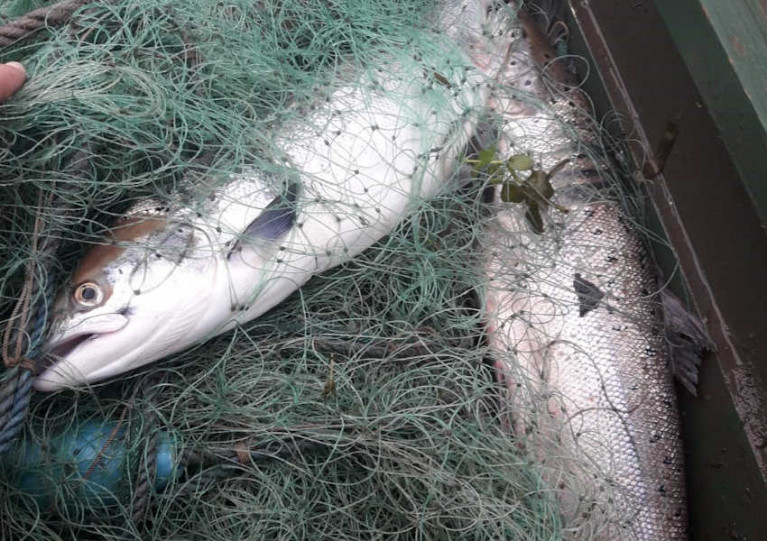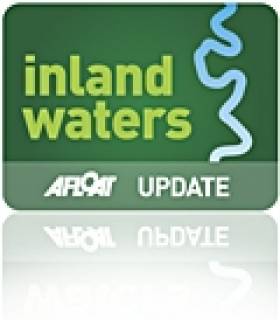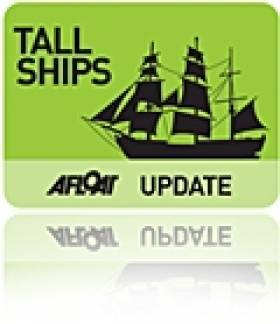Displaying items by tag: River Nore
Inland Fisheries Ireland (IFI) recently secured two separate convictions for illegal netting of salmon on the Barrow and Nore rivers respectively.
At a sitting of Kilkenny District Court on Tuesday 23 February 2021, Richie Lennon of New Ross, Co Wexford was fined €300 together with a €500 contribution towards costs following a prosecution taken by IFI.
Lennon pleaded guilty to the offences of illegal netting, the possession/control of four salmon and the refusal to give the name and address of another person when lawfully demanded.
The breaches of fisheries legislation occurred on 22 July 2020 on the River Barrow near Bauck in Co Carlow.
IFI fisheries officers outlined the facts of the case to the court and how Lennon had been observed in the act of illegal netting on the River Barrow, attempting to capture salmon.
Evidence in relation to the offence was given before Judge Carthy. Following the conviction, details of a previous prosecution against Lennon which had been dealt with at Wexford District Court on 15 April 2014 when the Probation Act had been applied was identified.
Judge Carthy made it clear to Lennon that if he appears in court again on similar offences, she will consider a prison sentence.
‘On the River Barrow and the River Nore, salmon stocks are well below their conservation limit and require protection’
On the same day in Kilkenny District Court, Michael Hynes of Ballybeg, Co Waterford was fined €300 together with a €500 contribution after he pleaded guilty to the offences of illegal netting, the possession of seven salmon and the refusal to give the name and address of another person when lawfully demanded.
The breaches of fisheries legislation here occurred on 22 June 2020 on the River Nore, in the townland of Clonamery, Co Kilkenny.
Evidence in relation to the offence was given before Judge Carthy sitting at Kilkenny District Court. IFI officers outlined the facts of the case to the court that Mr Hynes was apprehended and found to be in possession of seven dead salmon in his vehicle.
Lynda Connor, director of the South Eastern River Basin District at IFI, said: “I would like to commend the fisheries officers’ efforts and continuous commitment to protecting salmon.
“On the River Barrow and the River Nore, salmon stocks are well below their conservation limit and require protection. This type of illegal activity can have devastating effects on future stocks of salmon.
“These two convictions highlight the ongoing issue of illegal netting for salmon and IFI’s zero tolerance of this serious misconduct.”
Man On Raft Protests Kilkenny River Bridge Scheme
#Kilkenny - A Kilkenny man opposed the construction of a new road bridge over the River Nore in the city is entering the second day of his on-the-water protest, according to TheJournal.ie.
The protestor has erected a tent on his makeshift raft emblazoned with the words 'No CAS', in reference to the new Central Access Scheme for the city that some locals fear will bring more traffic into the medieval centre.
Yesterday the anonymous protestor told the same website that he launched his raft in an effort to obstruct preparatory works for the bridge scheme and provide a rallying point for other protestors to rally around.
Works were previously halted last week in the face of demonstrations, with some protestors entering the water by canoe to get in the way of construction workers.
TheJournal.ie has more on the story HERE.
Four More Drownings Bring Renewed Water Safety Appeal
#WaterSafety - Four more people have drowned in separate incidents around Ireland as the heatwave continues.
As RTÉ News reports, a 24-year-old man died while swimming in the sea near Ardara in Co Donegal yesterday afternoon (20 July).
Later, the body of a second victim was recovered from the Shrule River in Newtownstewart, Co Tyrone after getting into difficulty.
A third man in his 60s is was drowned after failing to return from a swim in a quarry near Carrick-on-Suir. His body was recovered earlier today.
The tragedies follow news of a 19-year-old who drowned while swimming with friends in Lough Leane in Killarney on Friday evening (19 July).
And a woman in her 30s was lucky to be rescued after getting into difficulty swimming in the River Nore near Kilkenny. She is currently in a serious but stable condition in hospital.
Irish Water Safety have renewed their appeal for the public to take extra care when taking to the water during this extraordinary hot weather that had already claimed seven lives as of Thursday last.
Trial Dredging to Help Rid Barrow of Invasive Asian Clam
#INLAND WATERWAYS - Trial dredging operations to curtail the spread of Asian clams at designated sites in the lower River Barrow are set to conclude today.
Inland Fisheries Ireland (IFI) employed the use of a a traditional cockle harvesting boat to physically remove the clams from the river bed, in an effort to explore methods of controlling or eradicating what it describes as an "ecosystem-changing invader" in other infested waters.
IFI scientists supervised the trials, using teams of divers to quantify the result of the dredging efforts.
The Asian clam (Corbicula fluminea) is "a most unwelcome addition to the fauna of the lower River Barrow". The bivalve mollusc is regarded as "one of the most notorious aquatic invasive species in the world".
First recorded in the river downstream of St Mullin’s in April 2010, subsequent IFI studies have revealed that the Asian clam is firmly established in the lower Barrow and in the River Nore downstream of Inistioge. Populations have also been recorded in the River Shannon and in Lough Derg.
In one section of the River Barrow the clam has achieved a "staggering" density of almost 10,000 per square metre.
Dr Joe Caffrey, senior scientist with IFI, said of the trial dregding: “It is imperative that every effort is made to control the expansion and spread of this highly adept invasive species.
"The results from these trials will inform future national management plans for this most unwelcome non-native species and will, at the very least, dramatically reduce the numbers of individuals in the test sites.
He added: "In tandem with these trials, research effort is being focused at producing other control methods that can be targeted as this species.”
The Return of the 'Wexford' Tall-Ship
A grant of €1m from Fáilte Ireland was allocated towards the cost of the refit as part of the National Development Plan (NDP). Visitors can now take guided tours of the floating tourist attraction though access to the shoreside visitor centre remains closed due to an upgrade. Work on an extension of a new exhibition centre is expected to be completed in May or June.
Dunbrody is a full scale reconstruction of the 19th century replica famine-ship based on the vessel built in 1845 in Quebec, Canada for the Graves family of New Ross. Ireland's most inland port being made famous with the visit of President John F. Kennedy in 1963 to the same quayside where Dunbrody is berthed.
To date the Dunbrody's presence outside her homeport has been scarce. During the Waterford Tall Ships Festival in 2005 she took part in a memorable and historic 'Parade of Sail' where she formed as part of the trio of Irish tall ships that met together for the only time. The sailing spectacle of the international fleet was headed firstly by the Irish trio with Asgard II leading followed by Dunbrody and astern the Jeanie Johnston.
In the following year Dunbrody made her maiden and only international voyage to Milford Haven in south Wales. The Pembrokeshire estuary had hosted the new festival, Seafair Haven. On that occasion she had the honour of leading another parade of sail, under the command of Captain Tom McCarthy.
Dunbrody was last dry-docked in 2006 and also at the New Ross boatyard which lies on the Co. Kilkenny side of the riverbank. The 176 foot / 54 metre barque was built in 2001 and was last vessel completed at the boatyard. During her building the public could access the yard and the construction process could be viewed from above at a gallery set within the covered building hall.
The structure no longer exists but which was built originally for the Ross Company boatyard during the 1970's. The yard specialised in building barge pontoons for markets in the North Sea until the premises closed in the 1980's. In recent years and under new management the dry-dock (75m X 15m) has been upgraded with a new gate and pump.
Looking for further reading on Tall Ships in Ireland? Click the links below:
Click this link to read all our Tall Ships Stories on one handy page
Previewing Ireland's Tall Ships 2011 Season
Can Ireland Get a New Tall Ship?
- Asgard II
- Jeanie Johnston
- river barrow
- New Ross
- River Suir
- Milford Haven
- Ports and Shipping News
- barque
- Fáilte Ireland
- Dunbrody
- Parade of Sail
- Brigantine
- Waterford Tall Ships Festival
- Dunbrody Heritage Centre
- River Nore
- New Ross Boat Yard
- Sea Haven
- National Development Plan
- NDP
- President John F. Kennedy
- Capt. Tom McCarthy
- Ross Company
- Seafair Haven

































































